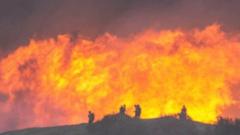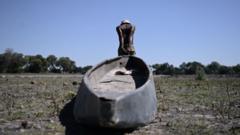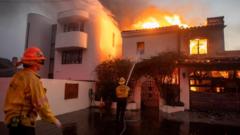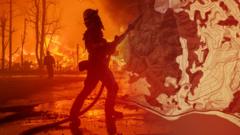**The balance of carbon dioxide in the Arctic tundra is shifting dramatically, as wildfires and thawing permafrost begin to release more carbon than the region can absorb, with significant implications reported in the NOAA's 2024 Arctic Report Card.**
**Arctic Tundra's Role in Climate Change: From Carbon Sink to Source**

**Arctic Tundra's Role in Climate Change: From Carbon Sink to Source**
**Rapid warming and wildfires transform the Arctic's relationship with carbon emissions.**
The Arctic tundra, historically a crucial carbon sink, is undergoing profound changes that may have far-reaching consequences for global climate. Turbulent developments in the region, such as unprecedented warming and rampant wildfires, have caused a shift where the tundra is now emitting more carbon dioxide than it sequesters. This transformation appears to be a significant milestone, likely the first time in thousands of years that carbon release has overtaken carbon absorption.
Research published in the National Oceanic and Atmospheric Administration’s (NOAA) Arctic Report Card illustrates the urgent problem. The 2024 report, unveiled during the American Geophysical Union's annual meeting, highlights directly how human-induced climate change is altering Arctic conditions. For the eleventh consecutive year, temperatures in the Arctic have been disproportionately higher than those experienced globally.
Notably, the period from October 2023 to September 2024 has been recorded as the second-warmest for the Arctic since 1900. The situation has reached critical levels with a concerning loss of sea ice, particularly observed in the Northwest Passage, which experienced the least sea ice coverage since detailed tracking began. Additionally, some parts of Arctic Canada saw record-breaking short snow seasons.
These shifts reflect a fundamental change in the ecosystem, according to Twila Moon, deputy lead scientist at the National Snow and Ice Data Center. The notable variations in environmental conditions over just the last two decades underscore the urgency of addressing these transformations—whether through policy, scientific research, or global collaboration as the planet contends with the consequences of climate change.
In summary, the Arctic is changing at an alarming pace. Once a protective barrier against climate change, it is now a contributor to global climate issues. Environmentalists and scientists stress the importance of vigilance and action as the Arctic landscapes we once knew recede into history.
Research published in the National Oceanic and Atmospheric Administration’s (NOAA) Arctic Report Card illustrates the urgent problem. The 2024 report, unveiled during the American Geophysical Union's annual meeting, highlights directly how human-induced climate change is altering Arctic conditions. For the eleventh consecutive year, temperatures in the Arctic have been disproportionately higher than those experienced globally.
Notably, the period from October 2023 to September 2024 has been recorded as the second-warmest for the Arctic since 1900. The situation has reached critical levels with a concerning loss of sea ice, particularly observed in the Northwest Passage, which experienced the least sea ice coverage since detailed tracking began. Additionally, some parts of Arctic Canada saw record-breaking short snow seasons.
These shifts reflect a fundamental change in the ecosystem, according to Twila Moon, deputy lead scientist at the National Snow and Ice Data Center. The notable variations in environmental conditions over just the last two decades underscore the urgency of addressing these transformations—whether through policy, scientific research, or global collaboration as the planet contends with the consequences of climate change.
In summary, the Arctic is changing at an alarming pace. Once a protective barrier against climate change, it is now a contributor to global climate issues. Environmentalists and scientists stress the importance of vigilance and action as the Arctic landscapes we once knew recede into history.


















